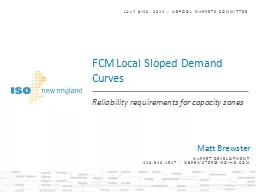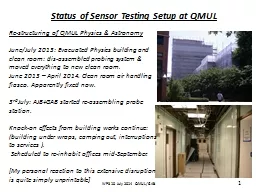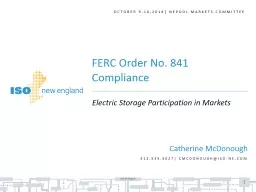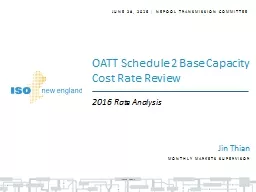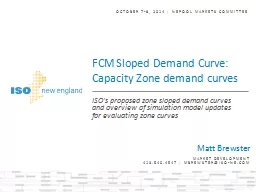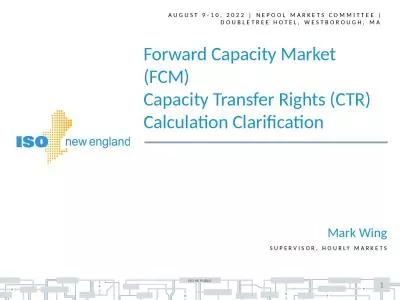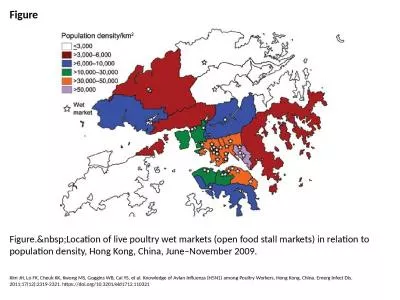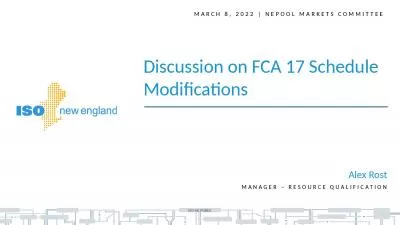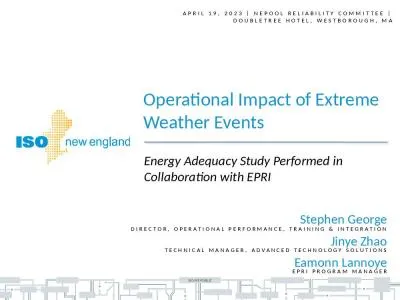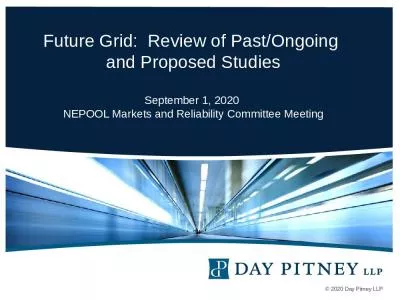PPT-July 8-10, 2014 | NEPOOL MARKETS COMMITTEE
Author : vestibulephilips | Published Date : 2020-10-22
Matt Brewster Market Development 4135404547 mbrewsterisonecom Reliability requirements for capacity zones FCM Local Sloped Demand Curves ISO intends to use existing
Presentation Embed Code
Download Presentation
Download Presentation The PPT/PDF document "July 8-10, 2014 | NEPOOL MARKETS COMMITT..." is the property of its rightful owner. Permission is granted to download and print the materials on this website for personal, non-commercial use only, and to display it on your personal computer provided you do not modify the materials and that you retain all copyright notices contained in the materials. By downloading content from our website, you accept the terms of this agreement.
July 8-10, 2014 | NEPOOL MARKETS COMMITTEE: Transcript
Download Rules Of Document
"July 8-10, 2014 | NEPOOL MARKETS COMMITTEE"The content belongs to its owner. You may download and print it for personal use, without modification, and keep all copyright notices. By downloading, you agree to these terms.
Related Documents

